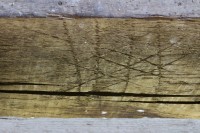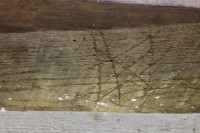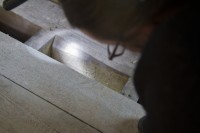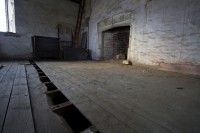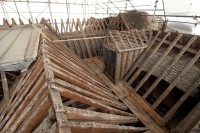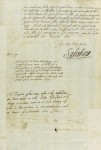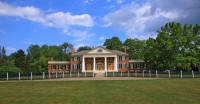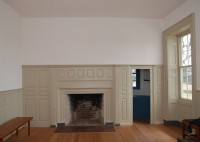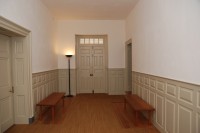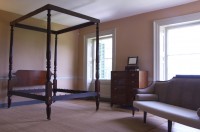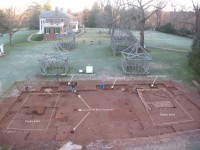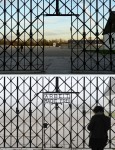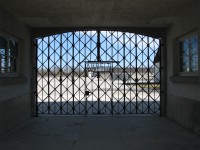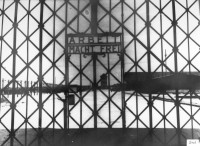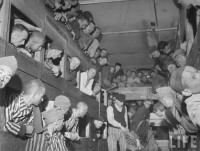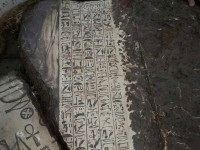After the wreck of explorer Sir John Franklin’s flagship, the HMS Erebus, was found in September, Parks Canada researchers had only two days to explore the site before temperatures plunged below zero making diving impossible. The team made seven dives during those two days, filming, photographing and measuring the wreck as extensively as possible, but they didn’t want to disturb the interior so they only sent cameras inside and did not recover artifacts.
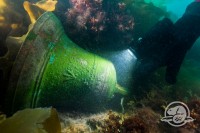 They were holding out on us, though, because one object was removed from the sea floor: the ship’s bronze bell.
They were holding out on us, though, because one object was removed from the sea floor: the ship’s bronze bell.
The bell was found on the deck adjacent to the ship’s displaced windlass (a form of anchor winch), above which it was originally mounted. Since then, the bell has been undergoing conservation stabilization and additional research.
The bell is intact and generally in very good condition. Two embossed markings – introduced when the bronze bell was first cast – are evident on the artifact: a Royal Navy “broad arrow” indicating property of the British Government, as well as the date “1845.”
 Ship’s bells hold a great deal of meaning. In addition to their practical purpose — they struck the half-hour day and night, and signalled the change of the watch — bells are symbolic incarnations of the ship. There’s a tradition in the Royal Navy that upside down bells are used as baptismal founts for sailors’ babies. The names of the baptized children are then engraved under the bell’s lip.
Ship’s bells hold a great deal of meaning. In addition to their practical purpose — they struck the half-hour day and night, and signalled the change of the watch — bells are symbolic incarnations of the ship. There’s a tradition in the Royal Navy that upside down bells are used as baptismal founts for sailors’ babies. The names of the baptized children are then engraved under the bell’s lip.
Given its symbolic and archaeological value, Parks Canada decided it would be more prudent to recover the bell instead of subjecting it to another long, frigid winter in the Queen Maud Gulf. It could conceivably be damaged by ice scraping the seabed, although it has survived 168 winters thus far without serious damage. Besides, a ship’s bell can provide essential confirmation of the wreck’s identity, and on a PR note, is an iconic symbol that makes a far more immediate rallying point than sonar scans.
As the Honourable Leona Aglukkaq, Minister of the Environment and Minister responsible for Parks Canada, puts it:
“The bell of HMS Erebus provides a tangible and compelling connection to the Franklin ships and is an important part of naval and Canadian history. The recovery of this important artifact is the crowning achievement for an incredibly successful 2014 search campaign that has captivated Canadians and the entire world.”
Still, the marketing coup had to wait. Parks Canada archaeologists wanted to examine the bell without public scrutiny and begin the process of stabilizing the find before making the announcement, which is why we’re only hearing about it six weeks after the bell was recovered. At first, the bell had to remain damp to keep it from corroding when exposed to the air. It was wrapped in bubble-wrap and kept humid during transportation to Ottawa.
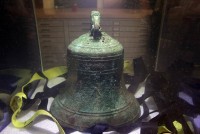 The bell is now sealed in a tank of distilled water in an environmetally-controlled secure location at the Parks Canada conservation laboratory. The water is being tested daily to detect any changes in the artifact. Over the course of months, perhaps as many as 18 or more, the bell will transition from fresh water baths to chemical baths that will leach all the salt from its surface and protect it from corrosion.
The bell is now sealed in a tank of distilled water in an environmetally-controlled secure location at the Parks Canada conservation laboratory. The water is being tested daily to detect any changes in the artifact. Over the course of months, perhaps as many as 18 or more, the bell will transition from fresh water baths to chemical baths that will leach all the salt from its surface and protect it from corrosion.
One the bell is cleaned and stabilized, it may reveal additional clues that are currently not visible. It will eventually go on public display at a location yet to be determined.
